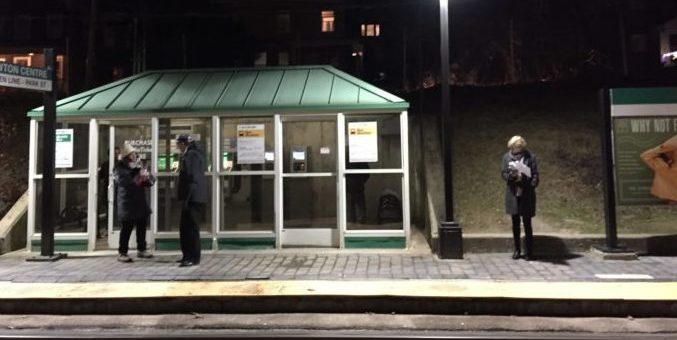Lois Levin, Chair of Green Newton’s Transportation Committee, spoke at the February 19 meeting of the Newton City Council’s Public Safety and Transportation Committee on transportation priorities for the City. Below are her remarks.
Testimony (February 19) from Green Newton’s Transportation Working Group on the Massachusetts’ Public Safety and Transportation Committee’s Legislative Priorities
Thank you to the PS&T Committee for this opportunity to provide input into your legislative priorities. I represent Green Newton’s Transportation Committee. We seek to prevent pollution through source reduction and reduced consumption. Vehicles that burn fossil fuels are a major source of both air and water pollution in Newton. Green Newton strongly believes that we must increase and strengthen the cleanest forms of transportation: walking, biking, and mass transit.
Our specific transportation recommendations for 2020-2022 are:
To improve walkability, Newton needs a sidewalk prioritization plan that focuses on connecting routes to key destinations including parks, shops, and restaurants. In addition to creating sidewalks where none exist along priority routes, the plan should include adding benches and trees, repairing broken sidewalks, and widening sidewalks so pedestrians can safely pass one another, walk in groups, or use a wheelchair. The prioritization plan must address dangerous crosswalks by reducing street width in the crosswalk location to minimize the time pedestrians and drivers are in a shared space, reducing corner radii to naturally slow turning vehicles, and reducing obstacles that block visibility, such as fencing or overgrown scrubs.
To improve bicycling our priority is to create two types of clearly defined bicycle routes: high speed routes throughout Newton for bicycle commuters, and low-stress, lower speed routes for micro-mobility (bikes, wheelchairs, strollers, scooters, etc). The Commonwealth Avenue Carriage Lane from City Hall to Hammond Street is a popular low-stress route. Both types of bicycle routes need to be well-mapped and interconnected. The low-stress routes need to be separated from vehicular traffic, so people can use them to safely run errands or do school pick-ups without a car.
To improve mass transit we want to focus on the #59 bus route (Watertown to Needham via Walnut St). The #59 bus has the potential to be a model for supporting transit-oriented development by running more frequently, ideally every 10 minutes, with extended hours, to make it useful for working people. The #59 bus goes through Newton’s densest residential areas – including Nonantum, Newtonville, and Needham St. Five new housing developments are proposed or being built along this bus route in Newton and more in Needham (e.g. at Muzi Ford). The bus connects the Needham commuter rail to the Green Line, to express buses on Washington St, and to major shops and shopping areas all along the route, as well as to important destinations such as NNHS, the Main Library, the Senior Center, and City Hall. We are well aware that improving the bus system requires that our elected officials work with the MBTA. We urge our elected official prioritize working the MBTA to make the developments along Route #59 truly transit-oriented.
We recognize that not everyone will be able to walk, bike, or take mass transit to reach their destination. Our hope is improved access to greener transportation will lead to greater use of cleaner transportation in our City.
Lois Levin
Green Newton Transportation Working Group



Recently on Twitter